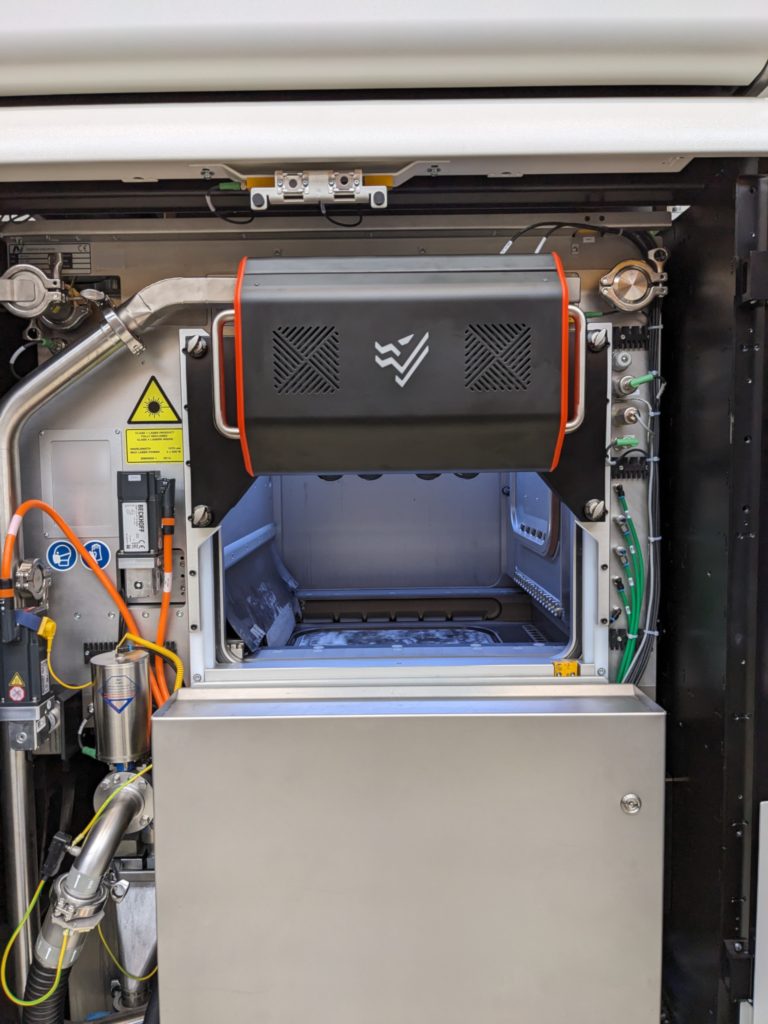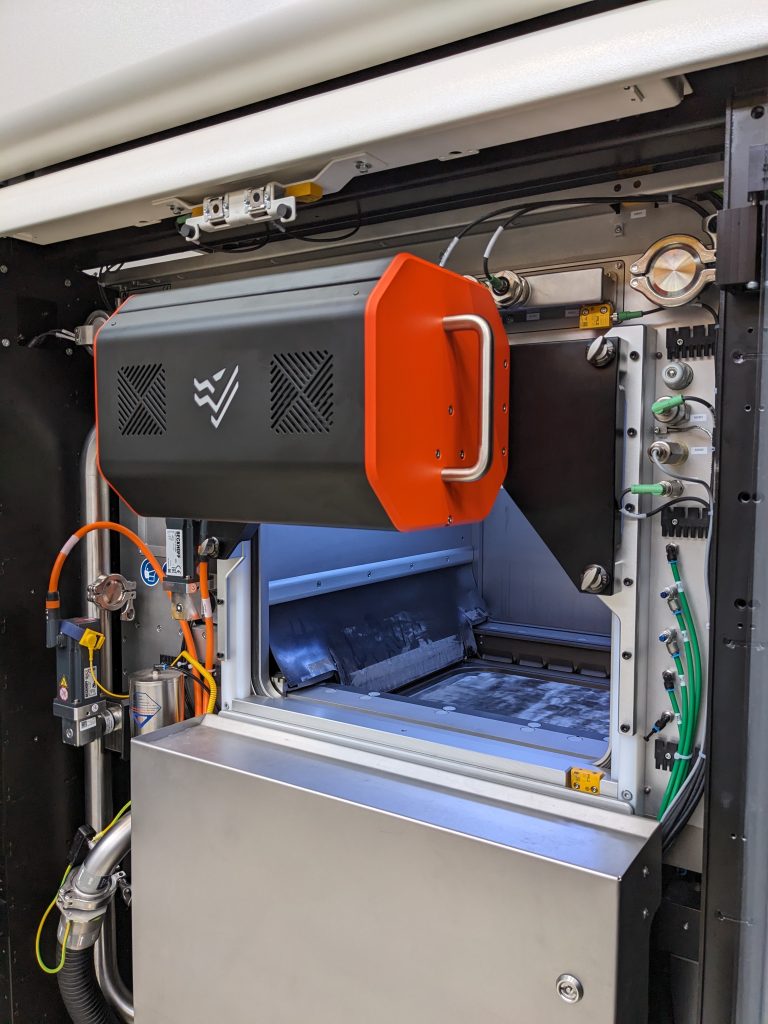
Additive Industries’ MetalFab 3D Printers Integrate New In-situ Monitoring Capabilities
Additive Assurance has agreed to combine its in-situ course of monitoring system into Additive Industries’ MetalFab laser powder mattress fusion (LPBF) 3D printers This collaboration seeks to enhance steel 3D printing course of monitoring in high-value functions.
Because the construct charge and productiveness of steel 3D printers elevated, in-process monitoring and high quality assurance capabilities are growing in significance.
This expertise performs a important function in guaranteeing repeatability, reaching high-reduction yield, and mitigating the chance of wasted materials attributable to failed builds. As such, Additive Industries will now provide stay 3D printer monitoring capabilities to its buyer base.
The corporate’s MetalFab 3D printers will combine Additive Assurance’s AMiRIS high quality inspection system. This unit, which might be mounted straight onto MetalFab, gives stay insights into the 3D printing course of. It will reportedly strengthen certification and high quality assurance efforts, enabling shorter manufacturing cycles and higher confidence within the remaining product.
“Our partnership with Additive Assurance aligns completely with our dedication to advancing the capabilities of steel additive manufacturing,” commented Mark Massey, Additive Industries’s CEO.
“By integrating AMiRIS with our MetalFab portfolio, together with our new MetalFab 300 Flex, we’re enhancing real-time high quality assurance, providing our prospects higher flexibility, and setting new requirements in manufacturing consistency and reliability.”


MetalFab 3D printers combine in-situ monitoring
Since its founding in 2012, Additive Industries has constructed a considerable portfolio of commercial LPBF 3D printers. The corporate launched its first system, the MetalFAB1, again in 2016. The 3D printer has since been leveraged by prospects in aerospace, automotive, industrial, vitality, and high-tech market verticals.
Extra lately, throughout RAPID + TCT 2024, Additive Industries unveiled its latest providing, the MetalFab 300 Flex. This distinctive system options an extendable construct plate that may be accessed by way of a month-to-month or lifetime license. Clients can prolong the construct space from 11.81 x 11.81 x 15.75in to 16.54 x 16.54 x 15.75in at any time, to fulfill particular utility wants.


In response to the 2 corporations, AMiRIS is a logical extension to the MetalFab collection of LPBF 3D printers. It can reportedly tackle key high quality assurance (QA) challenges confronted in industrial functions similar to house and aerospace manufacturing.
Primarily based in Melbourne, Australia, Additive Assurance launched the beta model of its steel 3D printing high quality assurance platform in 2019. The corporate launched as a spinout of a undertaking carried out by Monash College and Australia’s Defence Science and Expertise Group.
Its in-situ monitoring unit allows QA reporting throughout a fleet of a number of machine varieties. A patent-pending expertise, it makes use of optical sensors to assemble micron-level element in the course of the 3D printing course of. Machine studying is employed to analyse this knowledge, offering insights into the steel additive manufacturing course of.
AMiRIS is designed to detect numerous 3D printing course of instabilities. It options adjustable thresholds for monitoring, notification and intervention to make sure excessive 3D printer utilization and high quality management.
“We’re delighted to be working with Additive Industries so as to add worth to their buyer’s expertise and to push the boundaries of what’s doable with L-PBF AM,” added Marten Jurg, CEO of Additive Assurance.
The partnership will see broader deployment of in-situ monitoring for MetalFab customers. This, the businesses declare, may result in higher adoption of LPBF 3D printing sooner or later.


Defect detection for steel 3D printing
Defect detection and high quality assurance have rapidly develop into important instruments for steel 3D printing functions, as producers look to spice up productiveness, guarantee high quality, and cut back waste. This demand has seen extra corporations develop and introduce new course of monitoring choices.
Earlier this 12 months, Chicago-based 3D printing high quality assurance software program developer Phase3D introduced a collaboration with the USA Air Pressure (USAF) and NASA to develop Fringe Analysis. This new in-situ monitoring software program is alleged to be the primary to measure anomalies throughout steel powder mattress fusion (PBF) 3D printing and correlate these to defects within the remaining half.
In response to Niall O’Dowd, Founder and CEO of Phase3D, the defect-detection software program will enhance 3D printer throughput by over 10% yearly. This can be achieved by stopping the manufacturing of elements that may later fail inspection. Specifically, the software program is very nicely suited to detecting porosity in 3D printed elements. It is a pertinent problem for aerospace functions. Porosity typically causes steel elements to be rejected by the USAF and NASA.
Elsewhere, 3D printing software program and companies firm Materialise provides its AI-powered Course of Management software program for steel 3D printing. By way of this device, customers can analyze knowledge collected throughout 3D printing to manage the standard of their elements.
This enables faulty elements to be positioned earlier than the post-processing and high quality inspection phases, saving customers money and time. In response to Materialise, these steps can add 30% to 70% to the prices of a remaining half.
Wish to assist choose the winners of the 2024 3D Printing Business Awards? Be a part of the Skilled Committee right this moment.
What does the way forward for 3D printing maintain?
What near-term 3D printing traits have been highlighted by trade consultants?
Subscribe to the 3D Printing Business publication to maintain updated with the most recent 3D printing information.
You too can comply with us on Twitter, like our Fb web page, and subscribe to the 3D Printing Business Youtube channel to entry extra unique content material.
Featured picture reveals an AMiRIS unit mounted on a MetalFAB G2 3D printer. Picture by way of Additive Assurance.

